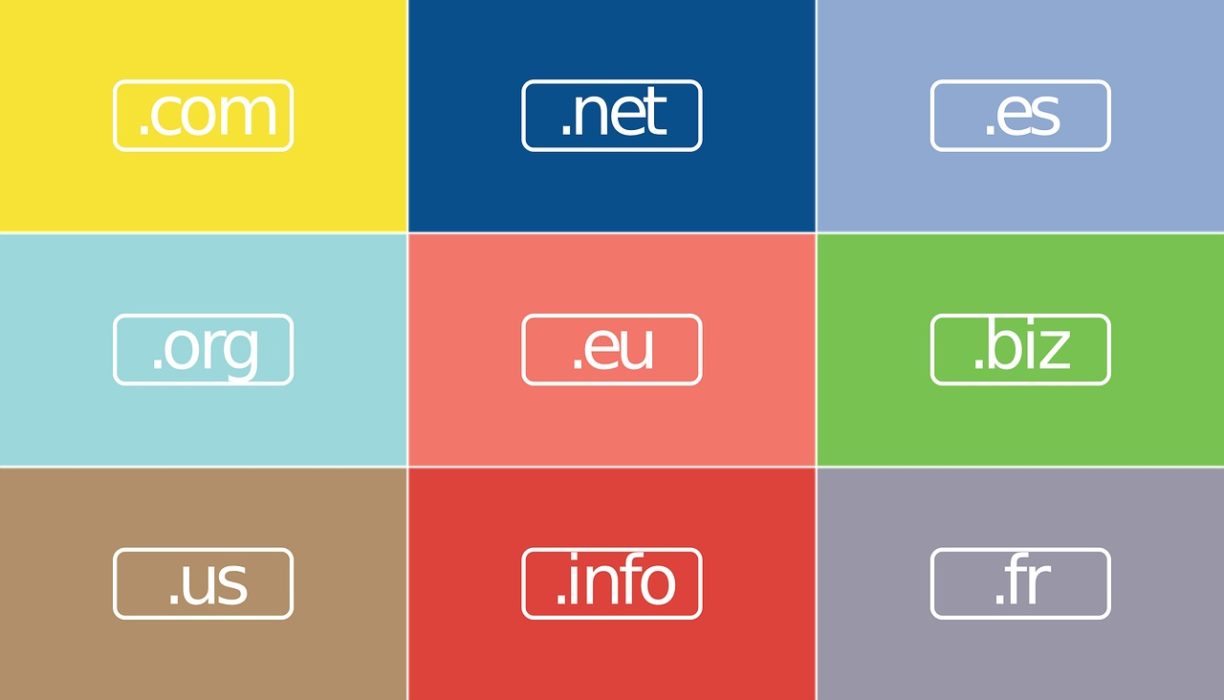On a basic level, choosing a domain name is important because (1) that’s just how the internet is set up, and (2) the addressing scheme it uses is not very effective. Here’s why.
The internet is essentially a network of interconnected computers. Each device has an Internet Protocol – also known as IP – address. This is usually a string of numbers separated by periods and looks something like 232.99.115.64 and is unique to each computer.
Now, imagine having to remember the IP address of each one of your favorite websites? You can see how this would be a problem.
So, a team of scientists came up with the ingenious idea to assign a unique name to each numeric IP address. That’s how the domain naming system was born. It is essentially a technical shortcut – a short and memorable name that makes it easier to search for and remember different websites. There is, however, a method to the madness.
Here are some helpful tips on how to choose a domain name that’ll make your business website, blog, or eCommerce store stand out from the rest.
1. Understand the Different Parts of a URL and Pick the Right TLD
(In the above example, the tld (or top level domain) is .com)
A domain name has different parts to it, each of which is separated by dots. Here’s what they represent:
- https://www.example.com/ – This is the complete URL
- www.example.com – This is the fully-qualified domain name (FQDN)
- www – This is the sub-domain
- .example – This section is referred to as the second-level domain
- .com – This is the top-level domain or domain TLD for short
What is TLD
TLD is short for top-level domain and is the suffix extension at the end of a web address. TLDs generally fall into three categories:
- Generic top-level domains – These are all the suffix extensions of a web address that are not associated with countries. The most common ones you’ll come across include .com, .org, .net, .co, .info, .biz, .blog, and .me.
- Country code top-level domains – These refer to all the ones that use a country or geographical location to identify them. Examples include .uk, .au, .ca, .us, .de, etc.
- Sponsored top-level domains – These are the special domain extensions reserved and maintained by the Internet Assigned Numbers Authority (IANA) for very specific purposes. They include .gov, .edu, .int, .mobi, .post, .museum, .travel, etc.
Choose a domain extension that fits the purpose of your business. For instance, if it’s for a company website, a .co, or .com TLD will suffice. If it’s for a blog, consider using .me or .blog.

If you’re setting up a website for a non-commercial organization or nonprofit, a .org extension would be the best fit for it. If you’re developing an informational site, use a .info TLD.
2. Choose a Name That’s Easy to Type
The rule of thumb here is to steer clear of words that may have multiple spellings. It would be great if everyone had good grammar and knew how to spell all words correctly but, that’s not the reality we live in.
Plus, other factors may come into play like the different word spellings as they exist in different variations of a language. Here are some instances where using certain words that have multiple spellings may make it harder to find your website:
- “colormepretty.co” vs. “colourmepretty.co”
- “laborlaws.org” vs. “labourlaws.org”
- “paediatricnews.info” vs. “pediatricnews.info”
Also, avoid slang like using “u” instead of “you”; “xpress” instead of “express.” Just keep it simple.
3. Make It Short and Memorable
The longer a name is, the higher the chances of people misspelling or mistyping it. While this is the perfect opportunity to bring out your creativity, you still need to rein it in a little. Choose a name that sounds catchy and appealing. This makes it more likely to remember.
It helps to first run your ideas by friends and family before you buy it, just to make sure it makes sense to people. If they get it, then it’s a go!
4. The Best Domain Name Incorporates Keywords
Try as much as possible to pick a name that describes the services you offer. For instance, if you have a bakery, a name along the lines of “TastyMuffins.biz” would be appropriate. If you’re a locksmith in Trenton, NJ, a domain name like “TrentonLocksmith.co” is pretty descriptive.
Also, consider using keyword domains, which are essentially domains that incorporate keywords in them. “BuyWeddingDress.com” is an example of a keyword domain.
These play a major role in helping websites rank higher in search engines like Google and Bing. Carry out a domain keyword search to find out what your target audience types in the search engine query field when looking for services related to your industry.
Once you have a list of them, run them through a domain name search tool to check if they’re available. You might find that several of them are already taken.
If that’s the case, try incorporating your target area in the search. An example: “BuyWeddingDressVegas.com” or “BuyWeddingDress.vegas.” If it’s available, then buy the domain name before someone else takes it!
5. Use Numbers or Hyphens Sparingly

Numbers are often tricky in domain names. If you are an expert SEO, this is seldom going to be a problem since your traffic primarily finds your site through organic search keywords. But if you are not proficient at SEO, this could be a problem, particularly if you ask people to visit your site by URL.
When people hear your web address, they never really know whether the numbers stated are supposed to be spelled out or written in numeric form. The same thing applies to dashes. They often get left-out or misplaced within the address.
If you find that you need to use hyphens in your domain name, try different variations of the words to eliminate the dashes. Maybe try using a different TLD instead? Like .co rather than .com? If the variations still don’t work, consider picking a different name altogether.
As a side note, do some research on the name first to make sure that it isn’t copyrighted or trademarked by another company. IP infringement issues could land you in a lot of legal trouble that may cost you more than you bargained for.
Pick the Right Name for the Right Results
Your website domain name is an extension of your brand. It’s always a great idea to buy various TLDs for it as well as commonly misspelled variations of the name. That way, all visitors to these domains can be redirected to your main website to deter competitors from riding on your brand’s reputation.
A domain name could be the difference between having a successful, well-known website and getting lost in cyberspace… forever. So pick wisely. Talk to an expert today to help you choose a name that aligns with your business’ purpose.

